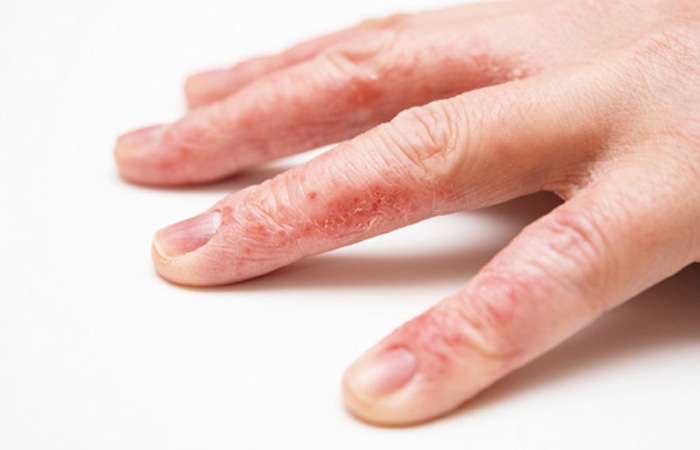In Clinical
Follow this topic
Bookmark
Record learning outcomes
NICE has published new draft guidelines that aim to ensure all babies, children and young people using NHS services have the best possible experience of care
Learning objectives
After reading this feature you should be able to:
- Understand and explain the scope and aims of NICE’s new draft guidance on younger people’s health
- Implement practical steps to help young customers better engage with their own healthcare
- Offer advice on treatment and self-care for common
childhood ailments.
The NICE draft guideline, ‘Babies, children and young people’s experience of healthcare’, is currently under consultation, with full publication expected in August.1
NICE says the aim of the guidance is to help improve health outcomes and wellbeing among the younger generation, acknowledging that “the healthcare system can be intimidating to younger patients, and poor experiences may lead to anxiety around engaging with it later in life”.
A key pillar of the new guidelines, which apply in all healthcare settings, is that healthcare professionals ensure children and young people are fully informed about their own health.
“Younger patients have historically been seen as more ‘passive’ recipients of healthcare than adults but supporting them to truly understand their condition and treatment can help them to feel more confident engaging with healthcare staff,” says Dr Paul Chrisp, director of the centre for guidelines at NICE.2
Pharmacy at the fore
As the frontline of primary care, pharmacy teams can take the lead in efforts to improve the healthcare experience of children and young people. This could include education and support for young sufferers affected by ongoing medical conditions, as well as being responsive and proactive in helping children manage everyday ailments and health concerns. For example, for young people newly diagnosed with a disease, pharmacy teams can help explain more about symptoms, treatment options, possible side-effects and long-term outcomes.
For teenage customers more able to engage directly with their own healthcare, pharmacy staff can be on hand to provide advice and support on sensitive issues such as eating disorders, skin complaints (e.g. acne) and contraception – topics adolescents may feel uncomfortable discussing with a parent or GP.
For any medical condition, community pharmacy is also an important conduit for self-care advice, including preventative action and lifestyle changes that children can make to help improve their condition or prevent it recurring. Pharmacists can play an active role in advocating the benefits of healthy lifestyles to young customers, promoting the importance of smoking cessation, a healthy diet and physical activity under their existing remit as healthy living ambassadors.
When communicating with children and young people, pharmacists can help ensure a positive experience by being friendly and making the effort to put them at ease. This could be as simple as taking time to introduce yourself, crouching down to be at eye level and/or using body language and positive affirmation to convey attentive listening. These steps can all help to develop trust and encourage a young person to contribute to the discussion.
Key facts
- New draft guidance from NICE recommends that children and young people are fully informed about their health and empowered to take an active role in looking after it
- It is important to make sure your pharmacy’s website is appealing and accessible for young customers
- Community pharmacy has an important role to play in the
management of common childhood conditions including asthma, eczema, chickenpox and head lice - A key pillar of the new guidelines is that healthcare professionals should ensure children and young people are fully informed about
their own health
Optimising information provision
As a basic principle, information given to children and young people needs to be clear, accurate and tailored to the individual’s age, level of maturity and understanding. Specifically, the NICE draft guidelines recommend that information provided to children and young people should be:1
- Evidence-based
- Appropriate for the child’s individual needs
- Culturally sensitive
- Non-judgemental
- Easy to understand – i.e. avoiding jargon and with medical terms explained
- Presented in accessible formats and language that can be understood – for example, through an interpreter, translated into another language, or as an easy-read version using pictures and symbols
- Given consistently by all members of the healthcare team.
Most young people turn to technology when accessing news and information so may find health advice presented digitally easier to digest. Signposting to websites or recommending relevant apps can therefore be more effective than written resources.
“We know that young people are more likely to look for health advice online or on social media so it is important they are advised which sources are reliable and trustworthy,” says Dr Chrisp.
NHS sites should be the first port of call for any young customer wanting to find good quality, up-to-date health information. For young customers with specific medical issues, pharmacy staff can also signpost to the leading UK charities, societies and support groups that cover each condition. Many of these include child-friendly pages and sections of their websites with content aimed specifically at younger users.
It is also important to make sure the pharmacy’s own website is appealing and accessible for young customers. Where possible, pharmacies should consider developing a section or tab on the main website that is dedicated to children and young people. This could focus on key issues relevant to children’s health and well-being, with information presented in an engaging format through the use of images, videos and animations. NICE also suggests involving young people directly in the creation of information materials to capture ideas that resonate best with the population they are targeted towards.
As well as establishing pharmacy as a trusted source of reliable health information and support for young customers, staff can also play a key role in debunking healthcare myths and inaccuracies that are often propagated via social media sites.
“Young people and their carers should be warned that some medical information available online may be inaccurate. They should be advised where they can access additional sources of information about their care or condition that is accurate, credible and evidence-based,” suggests NICE.

Opening channels of communication
NICE acknowledges that parents and carers will still play a central role in their children’s healthcare, but recommends that young people should be involved in decision-making and be encouraged to pursue self-advocacy.
Conversations should be a two-way street, stresses NICE. As such, it is important for pharmacy staff to ensure young customers understand their rights and responsibilities, particularly around issues such as privacy, confidentiality and consent to treatment.
In-store consultation rooms should be equally open to all customers, irrespective of age, and pharmacy teams should be prepared to devote the time needed to discussions around healthcare with younger customers, recognising that these conversations may be more lengthy than those held with adults.
NICE emphasises the importance of always listening to and addressing the concerns and fears of young people and children and ensuring that their feelings are treated with empathy and understanding. When interacting with younger customers, pharmacy teams should deploy both verbal and non-verbal communication methods, making sure to pause and allow time for responses and checking that a child has understood by getting them to repeat back the information in their own words.
Common childhood conditions seen in pharmacy
The enhanced responsibility for all healthcare professionals to optimise the healthcare experience for children and young people is a natural complement to pharmacy’s existing role in managing common childhood conditions. These include:
Chickenpox
Varicella zoster is a highly infectious virus that is most commonly contracted in childhood. Spread via coughing, sneezing and direct contact, the hallmark itchy chickenpox rash starts as red spots, which then fill with fluid and become blisters before scabbing over. Accompanying symptoms include fever, aches and pains, general malaise and loss of appetite.
Cooling gels and mousses can help ease itch/irritation and reduce the urge to scratch. Many products are specifically formulated with protective ingredients that help the skin to heal and can reduce long-term scarring. Paracetamol can also be recommended to reduce fever and discomfort but ibuprofen is contraindicated as it can cause serious skin infections.
Important self-care advice includes drinking plenty of fluids, cutting nails to reduce the risk of scratching/scarring, dressing in loose-fitting comfortable clothing and bathing in cool water. Medical advice should be sought if:
- There is any uncertainty over the chickenpox diagnosis
- Blisters show signs of infection
- The child appears dehydrated.
Infected children must be kept away from school or nursery until all the spots have crusted over, which usually takes five days from initial presentation.
Eczema
Eczema is a common skin complaint that usually appears in the first year of life and tends to be associated with other allergic conditions such as food allergies, asthma or hayfever. Eczema manifests as dry, red, itchy patches of skin typically found on the face, scalp, arms, behind the ears and on the front of the legs. These patches can sometimes dry out and crack, oozing yellow fluid before crusting over. In older children, the eczema rash tends to be more localised in the creases of the joints.
Emollients are the mainstay of treatment and should be applied on a daily basis – ideally three or four times a day – to keep the skin moisturised and prevent cracking. They are available in a range of formulations including lotions, sprays, creams and ointments, and should be applied in a smoothing (not rubbing) motion in the direction of hair growth.
Emollient wash products can be used as soap substitutes for handwashing, showering and in the bath. Parents should be encouraged to try a range of different emollients in order to find the product (or combination of products) that best suits their child’s skin. Different formulations may also be preferred for different times of day – for example, lighter, non-greasy creams during the day and thicker ointments at night.
Self-care tips for eczema include trying to identify and avoid triggers that may make the condition worse. This could be certain foods, particular soaps or washing powders or contact with pets. Children should also be encouraged to wear clothing made from cotton or other soft breathable fabrics (not wool) and to avoid getting too warm, especially at night.

Asthma
Telltale signs of asthma to be alert for in young people include cough (particularly a night-time or early morning cough, a cough that fails to resolve or recurs frequently, or coughing after physical exertion), wheeze, a tight chest (which young children might describe as a stomach ache) and breathlessness. Any child with suspected asthma should be referred to their GP for further evaluation.
Pharmacists can also help younger patients with diagnosed asthma by explaining the differences between reliever and preventer inhalers and outlining when and how each should be used. Advice on good inhaler technique is especially important. Spacers can be particularly beneficial for children, while face masks may be easier to use in babies and infants. Asthma UK provides short three-minute videos to help asthmatics of all ages use their inhalers better.
All children with asthma should be encouraged to complete a personalised asthma action plan that includes details of medications and action to be taken in the event of an attack.
Head lice
Head lice are common unwelcome visitors in children’s hair – particularly those of primary school age. Although head lice rarely cause symptoms, key signs can include itching and scratching, particularly around the nape of the neck, and snowy white specks in the hair, which are the discarded egg casings or nits.
The first step if head lice are suspected is to confirm infestation by carrying out detection combing using a wide-tooth nit comb. Once diagnosis is confirmed – if and when a live louse is found – treatment options include wet combing carried out rigorously over a two-week period or insecticides.
Choice rests with the individual preferences of the parent and/or child but pharmacy staff should outline the pros and cons of each approach. With insecticides, it is important to ensure that enough product is purchased to complete a full treatment course and that pack instructions are followed closely.
Wet combing or dimeticone 4% lotion are recommended for pregnant or breastfeeding women, young children aged six months to two years, and anyone with asthma or eczema. If head lice are detected, it is important that all members of the same household carry out detection combing and treat any lice that are identified.
References
- NICE. Press release published 5th March 2021. Available at: Children and young people need accurate, accessible information about their healthcare | News and features | News | NICE
- NICE. GID-NG10119. Available at: Project information | Babies, children and young people's experience of healthcare | Guidance | NICE

